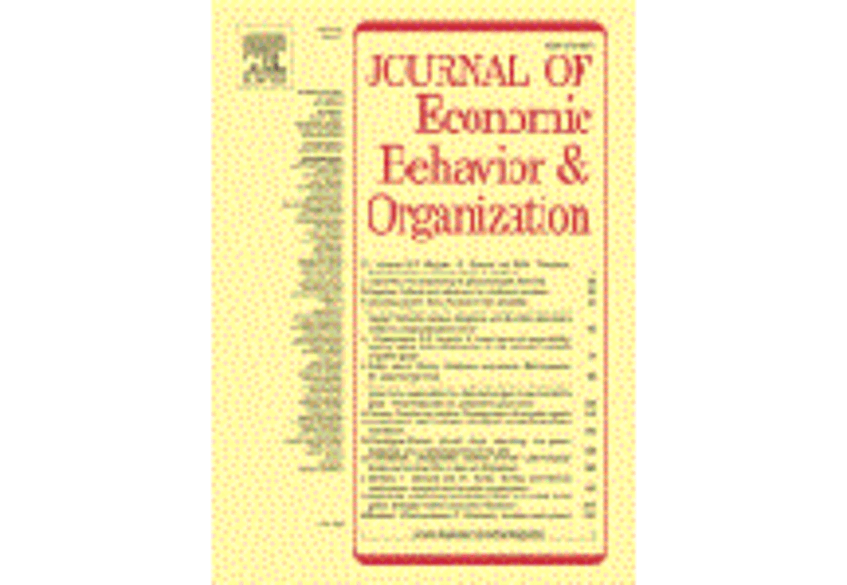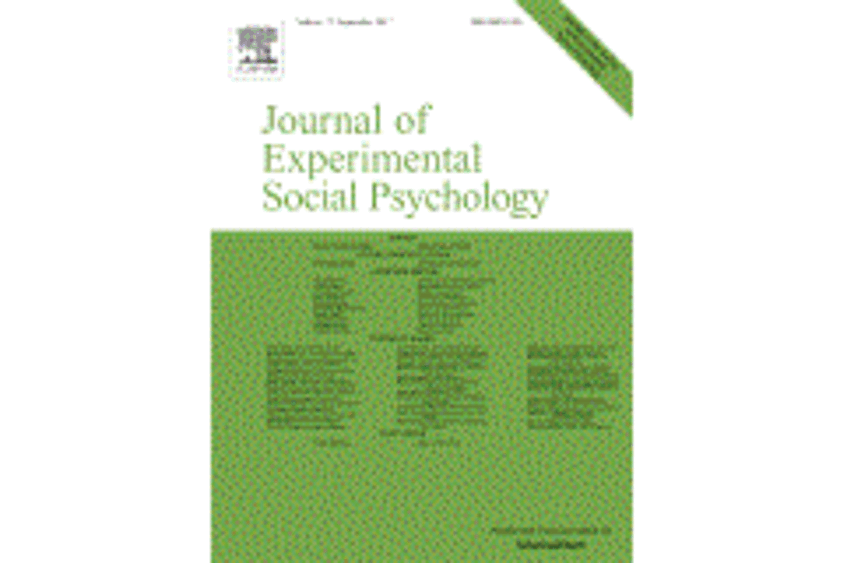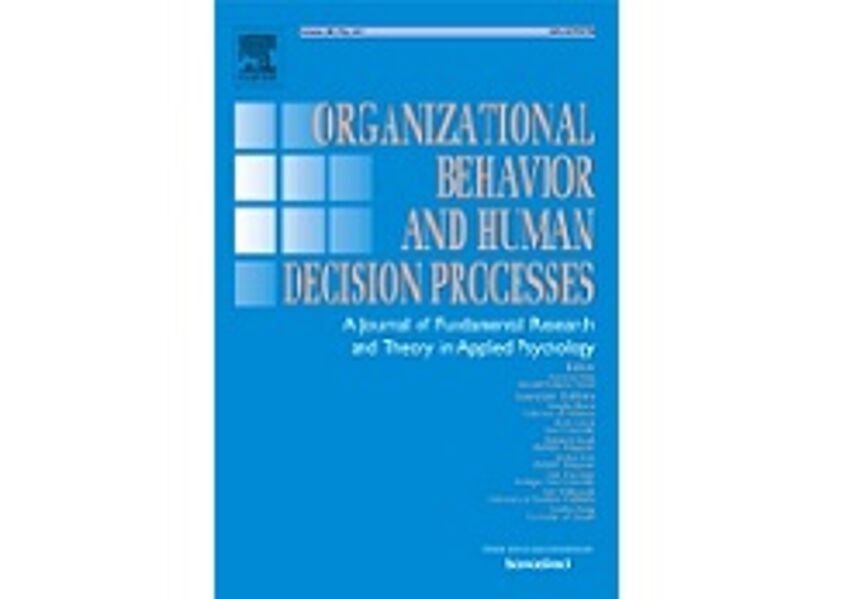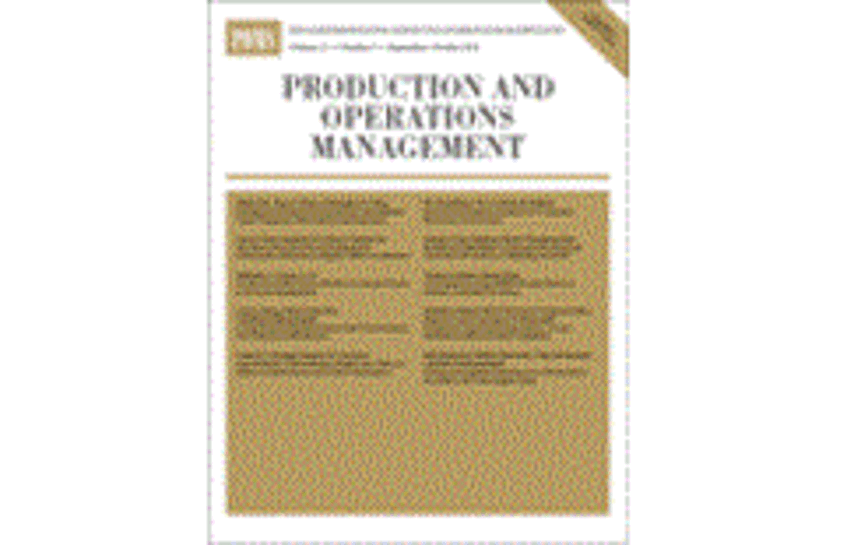Group-Decision Making
Our research on organizational design seeks to better understand how groups of agents interact in organizational settings. Our research on group decision making provides stimuli and early insights for our research on behavioral strategy and organizational design insofar as it studies issues related to risk and uncertainty, group conflict, cognitive biases, and leadership in simpler and ‘cleaner’ settings. Here, we are particularly interested in understanding the role of within-group processes that can cause groups to behave suboptimally irrespective of their organizational embedding. Such processes are for example insufficient information sharing, the presence of multiple agendas, unethical behavior, polarization of opinions and emotions, premature agreement leading to overconfidence, or a tendency to focus group attention on irrelevant information.
Selected ongoing projects
"The role of diversity in group confidence"
In many areas such as medical diagnoses, risk assessments or financial investments, decision makers need to cope with incomplete information and other sources of uncertainty. As a consequence, adequate levels of confidence by decision makers in their own judgments and choices may be just as important to the ultimate outcomes of their decisions as the quality of the decisions themselves. Disastrous outcomes often result from poor decisions that are made with excessive confidence. On the other side the potential benefits of a correct judgment might not be realized if its accuracy is doubted too strongly. Despite this crucial importance of adequate confidence levels, confidence levels of individuals and groups are in fact usually not well calibrated; that is most individuals and groups are either systematically over- or underconfident (e.g., Klayman, Soll, Gonzalez-Vallejo, & Barlas, 1999; Lichtenstein & Fischhoff, 1977; Moore and Healy, 2008). In this paper we consider whether team confidence judgments can become more accurate by increasing the social diversity of the group. In particular, we suggest that an increase in task conflict within more diverse teams will allow the team to make better calibrated confidence judgments about the quality of their performance compared to confidence judgments made by homogenous teams.
"Gender bias in group decisions"
In spite of the regular use of committees to make promotion and hiring decisions and the resulting great practical importance of this issue, the extent to which groups vs. individual decisions differ with respect to gender bias has remained unclear. This lack of research also stands in stark contrast to the substantial amount of research that has been dedicated to groups’ vs. individuals’ susceptibility to other common judgment and decision biases. In this paper we aim to address this lack of research and provide insights into groups’ susceptibility to gender bias by directly comparing promotion decisions made by groups and individuals in a laboratory experiment.
Published Papers

Keck, S., Tang, W. (2017). Gender composition and group confidence judgment: The perils of all male groups. Management Science, forthcoming
We explore the joint effects of group decision making and group gender composition on the calibration of confidence judgments. Participants in two laboratory experiments, individually and in groups of three, stated confidence interval estimates for general-knowledge questions and for financial forecasts. Across both studies our results reveal that groups with at least one female member are significantly better calibrated than all-male groups. This effect is mediated by the extent to which group members share opinions and information during the group discussion. Moreover, we find that compared to a statistical aggregation of individual confidence intervals, group discussions have a neutral or positive effect on the quality of confidence judgments for groups with at least one female group member; in contrast, group discussion actually harms confidence calibration for all-male groups. Overall our findings indicate that compared to all-male groups, even the inclusion of a small proportion of female members can have a strong effect on the quality of group confidence judgment.

Keck, S., Diecidue, E., & Budescu, D. V. (2014). Group decisions under ambiguity: Convergence to neutrality. Journal of Economic Behavior & Organization, 103, 60-71.
This paper focuses on decisions under ambiguity. Participants in a laboratory experiment made decisions in three different settings: (a) individually, (b) individually after discussing the decisions with two others, and (c) in groups of three. We show that groups are more likely to make ambiguity-neutral decisions than individuals, and that individuals make more ambiguity-neutral decisions after discussing the decisions with others. This shift toward higher ambiguity neutrality in groups and after a group discussion is associated with a reduction in the rates of both ambiguity aversion and ambiguity seeking. We suggest that the results might be driven by effective and persuasive communication that takes place in groups.

Karelaia, N., & Keck, S. (2013). When deviant leaders are punished more than non-leaders: The role of deviance severity. Journal of Experimental Social Psychology, 49(5), 783-796.
Evaluations of deviant behavior in organizations are often biased by personal characteristics of deviants. In four studies, we investigate the conditions under which sanctioners are more lenient towards deviants who hold leadership positions as compared to individuals at lower levels of organizational hierarchies. Results supported the hypothesized interactive effect of deviance severity—which is defined by the magnitude of harm that deviant behavior inflicts on others—and deviant leadership status on recommended (Studies 1 and 2) and actual punishments (Studies 3 and 4). Leadership status appeared to protect its holders in the case of low-severity deviances, but was a liability in the case of high-severity misbehavior. Furthermore, mediation studies with measured (Study 3) and manipulated (Study 4) proposed mediators supported our hypothesis that perceived entitlement mediates the effect of deviant leadership status on punishment for low-severity deviances. For deviances of high severity, we hypothesized and found that the effect of deviant leadership status is mediated by perceived betrayal of leader-specific responsibilities. These results suggest that deviance severity and perceived rights and responsibilities associated with leadership are important determinants of punitive actions that people are willing to impose on deviant leaders.

Keck, S. (2014). Group reactions to dishonesty. Organizational Behavior and Human Decision Processes, 124(1), 1-10.
Groups and individuals were compared for their willingness to incur financial costs in order to punish dishonest behavior by others. Study 1 demonstrated that dishonesty was punished more often by groups than by individuals and that groups’ higher willingness to punish dishonesty was mediated by stronger negative affect. Study 2 provided evidence that the increase in negative affect in groups was driven by exposure to other group members’ negative feelings and opinions during group discussions. Overall, the results suggest that being part of a group increases negative emotions toward dishonest others and leads to a greater willingness to engage in costly punishment.

Keck, S., Avcı, B., Loutfi, Z., Mihm, J. & Belavina, E. (2012). Comparison as incentive: Newsvendor decisions in a social context.Production and Operations Management, 23(2), 303-313.
Explicit formal mechanisms dominate the discussion about incentives in Operations Management, yet many other mechanisms exist. Social comparison between peers may provide strong implicit incentives for individuals. Social comparison arises naturally in all social settings and may thus be unintended; however, many companies deliberately use it to motivate employees. In this study, we model a social context in which purchasers evaluate their performance relative to their peers; a feeling of inferiority results in a negative contribution to utility, whereas a feeling of superiority results in a positive contribution. We find that social comparison induces characteristic deviations from the newsvendor optimum ordering decision: if fear of inferiority outweighs anticipation of superiority, then purchasers herd together; the converse scenario incites actors to polarize away from each other. In both cases, actors will deviate from ordering the newsvendor optimum in order to satisfy social goals. Demand correlation and profit margins moderate the extent of the deviation.
